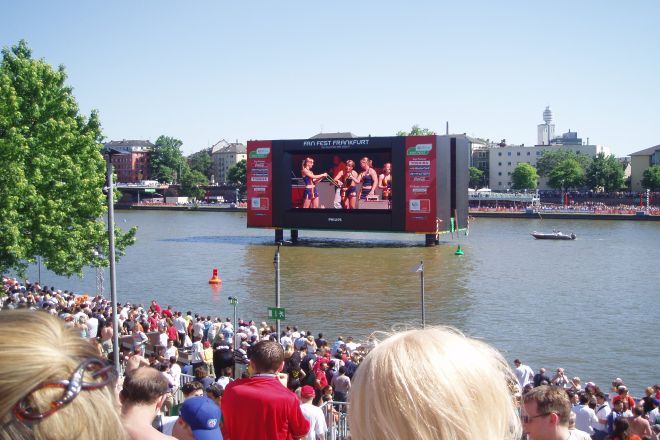مقدمة

ومع التطور السريع للعلوم والتكنولوجيا، يعرض الصمام have been widely used in various fields. Whether it is commercial advertising, sports events, or large-scale performances, LED displays have won the favor of the market with their excellent display effects and stability.
However, with the continuous expansion of the market, there are many brands of LED display screens with uneven quality, and consumers are often confused when choosing.
The quality of the LED display is not only related to its service life and stability but also directly affects the user’s viewing experience. Therefore, it is crucial to understand how to judge the quality of LED displays.
This article will start from the configuration point of view, provide an in-depth analysis of the basic elements and characteristics of LED displays, and help you understand how to determine the quality of LED displays from the configuration so that you can make a wise choice when purchasing.
1. Basic configuration elements of LED display
When we talk about the quality of LED displays, the first thing to consider is its basic configuration elements. These factors not only determine the basic performance of the display but also directly affect its service life and viewing experience.
- Screen size and resolution
Screen size refers to the overall size of the LED display, while resolution determines the number of pixels on the display. There is a close relationship between the two, and they have a significant impact on viewing distance and display effects.
First, the relationship between screen size and viewing distance is crucial. Generally speaking, the larger the screen size, the more the viewing distance should be increased accordingly to ensure that the audience can clearly see the content on the screen.
If the screen size is too large and the viewing distance is too close, it may cause eye fatigue to the audience and even affect vision health.
Secondly, the impact of resolution on display effects cannot be ignored. The higher the resolution, the more pixels on the display and the richer the image details. The high-resolution LED display can present a clearer and more delicate picture, bringing a better visual experience to the audience.
- LED lamp bead type and quality
LED lamp beads are one of the core components of LED displays. Their type and quality directly affect the brightness, color reproduction, and service life of the display.
First of all, different types of LED lamp beads have different characteristics. For example, some lamp beads have high brightness and bright colors and are suitable for outdoor advertising and other scenes, while other lamp beads pay more attention to stability and low power consumption and are suitable for indoor displays and other situations.
Therefore, when choosing an LED display screen, you need to choose the appropriate lamp bead type based on the actual usage scenario.
Secondly, the quality of the lamp beads also has a crucial impact on the life of the display screen. High-quality LED lamp beads have a longer service life and better stability, which can ensure that the display screen still maintains good display effects during long-term use.
Inferior lamp beads may suffer from brightness attenuation, color distortion, and other problems soon after use, seriously affecting the use of the display.
- Driver chip and control system
Driver chip and control system are two other important configuration elements of LED display. They not only determine the performance stability of the display but also affect the ease of use and scalability of the display.
First of all, the performance and stability of the driver chip are crucial to the operation of the display.
A high-quality driver chip can ensure that the display screen remains stable under conditions such as high-speed refresh and high-brightness display, reducing the possibility of failure.
Secondly, the function and ease of use of the control system are also important factors to consider when choosing an LED display.
A powerful and easy-to-operate control system can simplify the use of the display and increase efficiency. At the same time, it also supports a variety of signal input and output methods, allowing users to flexibly configure according to actual needs.
2. Configuration characteristics of high-quality LED display

The configuration characteristics of high-quality LED display screens are like a perfect fusion of technology and art. It is not just a cold electronic device but also a work of art showing visual effects. So, what are the configuration features of these displays? Let’s take a look!
- Using high resolution and high refresh rate technology
Imagine you are watching a high-definition movie; the picture is clear and detailed, and every detail is lifelike. This is the magic of high-resolution technology. The high-quality LED display uses high-resolution technology to make the picture clearer and make it seem as if it is within reach.
The high refresh rate technology is like adding an “accelerator” to the picture. It makes the picture smoother; whether it is a fast-moving scene or a delicate dynamic effect, it can be easily presented, making you feel like you are in the picture.
- Use high-quality LED lamp beads and driver chips.
LED lamp beads and driver chips are like the “heart” and “brain” of the display screen. High-quality LED lamp beads can emit bright and stable light, ensuring the brightness and color reproduction of the picture.
The high-performance driver chip can ensure that the display screen can operate stably in various environments without problems such as stuck or flickering.
This combination of configurations is like injecting powerful vitality into the display, allowing it to show even better visual effects.
- Equipped with an intelligent control system
The intelligent control system is like the “intelligent housekeeper” of the display screen. It simplifies the operation process and allows you to easily control every detail of the display. Whether it is adjusting brightness, contrast, or switching screen content, it only requires simple operations.
In addition, the intelligent control system also has powerful expansion functions and can be seamlessly connected with other equipment to achieve more functions.
For example, you can remotely control the display screen through your mobile phone or computer and change the content anytime and anywhere; you can also connect the display screen to the sound system to create an all-around audio-visual feast.
3. Configuration hidden dangers of low-quality LED displays
When we talk about low-quality LED displays, we have to mention the hidden configuration risks behind them. These hidden dangers are like time bombs that may destroy our visual feast at any time, forcing us to face a series of headaches while enjoying the pictures.
- Low resolution and insufficient refresh rate
Imagine that you are watching a wonderful football game, but because the resolution of the display is too low, the figures of the players become blurred, or because the refresh rate is insufficient, there is obvious smearing on the screen, making you It impossible to capture every wonderful moment accurately. This is a common problem caused by low-quality LED displays.
Resolution and refresh rate are the two core parameters of the display, which directly determine the clarity and smoothness of the picture. If these two parameters are not up to standard, no matter how gorgeous the display looks, it cannot hide its inherent flaws.
- Use inferior LED lamp beads and driver chips.
LED lamp beads and driver chips are important components of the display screen. Their quality directly determines the performance and life of the display screen. However, some low-quality LED displays often use inferior lamp beads and chips in order to reduce costs.
The light emitted by these low-quality lamp beads is often uneven, resulting in obvious brightness differences in the picture and serious color distortion. However, inferior driver chips cannot guarantee the stable operation of the display, are prone to failure, and even shorten the service life of the display.
- The control system has a single function and is unstable
The control system is the brain of the LED display. It is responsible for receiving and processing various signals and controlling the display content of the display. However, some low-quality display screens are often equipped with control systems with single functions and cumbersome operations, which cannot meet the diverse needs of users.
To make matters worse, these control systems are often less stable and prone to failure. Once a fault occurs, it will not only affect the normal use of the display but may also cause unnecessary losses to the user.
To sum up, the hidden dangers of low-quality LED display configuration cannot be ignored. In order to avoid these potential risks, we must keep our eyes open when purchasing a display screen and carefully identify its configuration parameters and quality. Only by choosing a high-quality display can we enjoy a visual feast of clear, smooth, and realistic colors.
4. How to choose a high-quality LED display

The choice of LED display is crucial to ensuring a good viewing experience. Here are some suggestions to help you choose a high-quality LED display:
- Determine the screen size and resolution according to your needs:
The choice of screen size should be based on the actual application scenario, such as conference rooms, billboards, or sports venues. Make sure the size you choose meets your viewing distance needs and fits within the installation space.
The higher the resolution, the richer the details of the picture. Therefore, when choosing a display screen, you should give priority to high-resolution products to ensure clear and detailed images.
- Understand the brands and performance of LED lamp beads and driver chips:
The quality of LED lamp beads directly affects the brightness, color reproduction, and lifespan of the display screen. It is recommended that LED lamp beads be chosen from well-known brands that have undergone strict quality inspection.
The driver chip is the key to the stable operation of the display screen. Make sure the selected chip has sufficient power, a stable input voltage range, and matching output current and voltage.
At the same time, the quality and stability of the chip should be considered, as well as whether it has safety functions such as over-current protection, over-temperature protection, and short-circuit protection.
- Examine the function and stability of the control system:
The control system should be easy to operate and have rich functions, such as screen switching, brightness adjustment, color correction, etc.
Stability is an important indicator of the control system. Find out whether the control system has a hot backup function to deal with unexpected situations and ensure the continuous and stable operation of the display.
- Refer to user reviews and cases to choose a reputable brand:
Read user reviews to understand the actual use effects of the product, including image quality, stability, after-sales service, etc.
Look at the brand’s historical cases to understand its performance in different application scenarios. Choose a brand with rich experience and a good reputation to reduce purchasing risks.
خاتمة
Through the above analysis, we can clearly see that the quality of LED display screens is closely related to their configuration. A high-quality LED display must perform well in terms of screen size, resolution, selection of LED lamp beads and driver chips, and intelligence of the control system. On the contrary, low-quality LED displays often have obvious shortcomings in these configurations, which affects the overall use effect and lifespan.
Therefore, when purchasing LED displays, consumers should have an in-depth understanding of the product configuration and make choices based on their actual needs.
At the same time, referring to factors such as user reviews, cases, and brand reputation is also an important way to ensure the purchase of high-quality LED displays.
Finally, if you want to know more about how to choose an LED display, يرجى الحصول على اتصال معنا.
